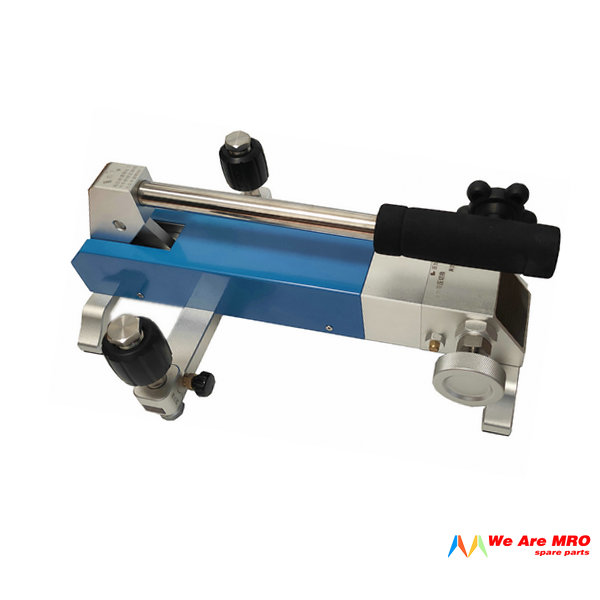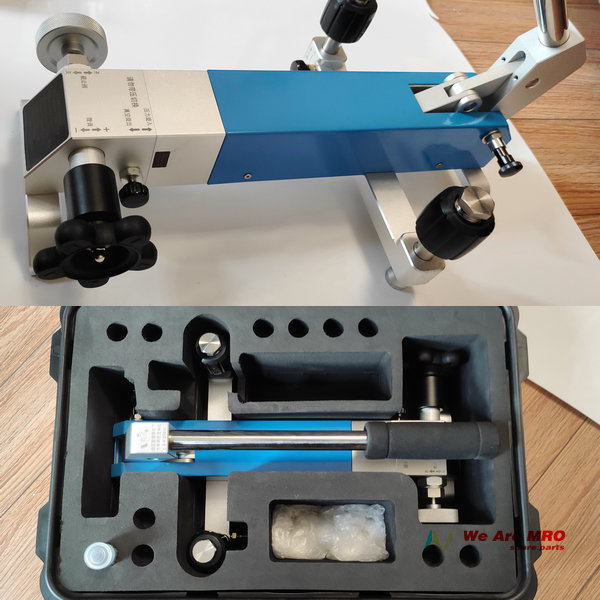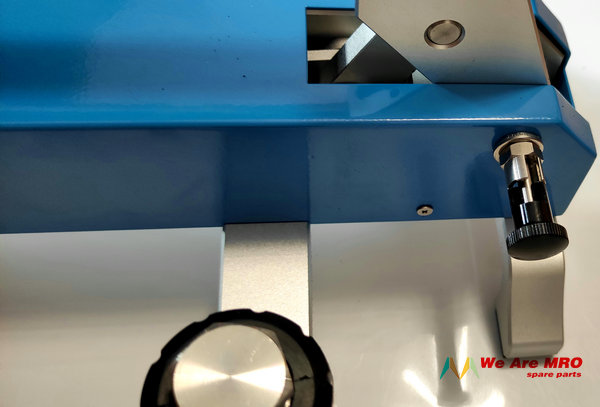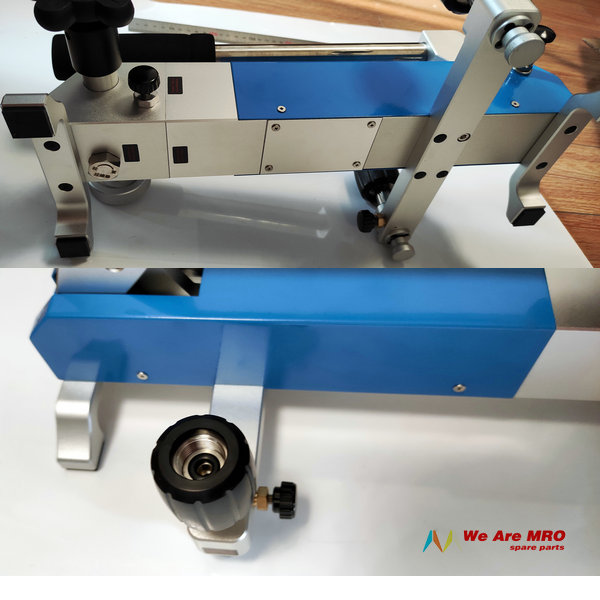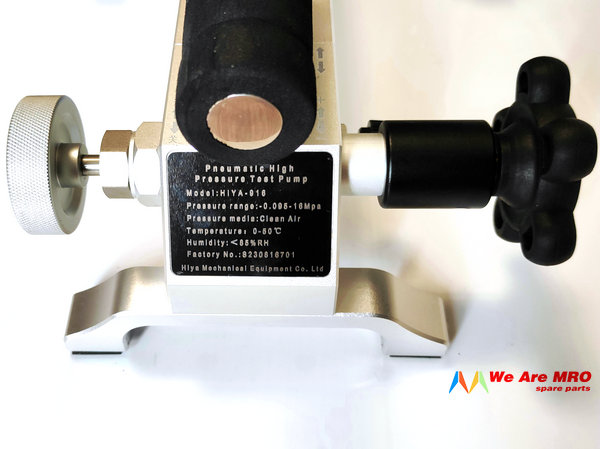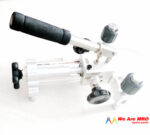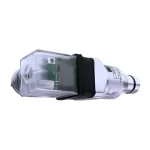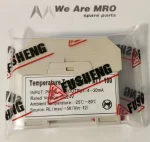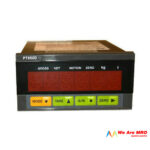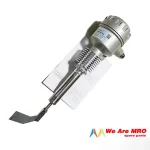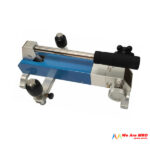Pneumatic High Pressure Test Pump
Pressure range:95% vacuum to 16Mpa ( 160 bar ); -0 .095 to 16Mpa
Temperature:0 to 50℃
Humidity:< 85%RH
Adjustment resolution:0.1mbar
Overpressure Safety Limit: 180 bar
Pressure media:Air
Net Weight: 5.76 k g
Dimensions: 3 8 7 × 250 × 160mm (long × Wide × High)
Standard Table Interface:M20×1.5 (customized:1/4NPT,1/2NPT,G1/4,G1/2)
Characteristics of portable high-pressure pressure pump
1. Open structure, high-quality aluminum alloy, stainless steel components.
2. The pressure pump adopts a lever pressure structure, which is labor-saving and fast.
3. Micro adjustment and pressurization adopt a spiral pressurization method, which is fast and labor-saving.
4. High reliability, non leakage, and high engineering quality.
5. Suitable for calibration of pressure instruments such as pressure gauges, pressure transmitters, pressure switches, and pressure sensors.
6. The fine-tuning valve adopts a spiral method, with small friction, stable pressure rise and fall, and high accuracy.
7. It has two quick connectors for more convenient testing.
8. Equipped with a built-in filter and drain outlet, there is a filter screen below the output outlet, and there is a drain outlet above the product. If impurities are detected in the product, they can be automatically discharged to the drain outlet.
The portable high-pressure pressure pump mainly consists of a pump body assembly, a pressure rod assembly, a shut-off valve, a fine adjustment valve, a vent valve, a directional valve, and two M20 × 1.5 quick pressure output connector composition.
1. Pump body assembly: composed of output bracket, pre pressure pump body, reversing valve body, piston component, etc., used for pressure generation, retention, control, and output.
2. Pressure rod component: composed of handle rod, connecting rod, connecting block, bearing, etc., used for pressure making operations.
3. Stop valve: used to stop the pressure between the pre pressure pump body and the pre pressure pipeline.
4. Fine adjustment valve: used for fine adjustment of pressure.
5. Air release valve: used to remove pipeline pressure after calibration work is completed.
6. Reversing valve: used for switching between vacuum and positive pressure working modes.
7. Output connector: used to quickly connect standard meters and checked meters.
Note: Install a standard gauge on the left end and a check gauge on the right end, which is conducive to the discharge of dirt from the check gauge.
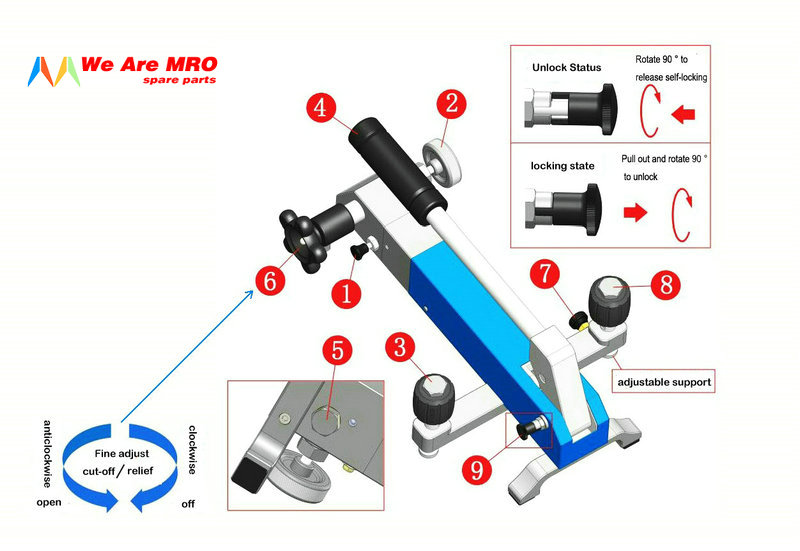
1
Pressure/vacuum selector
(Positive pressure: pull it out; Vacuum: push it in)
Do not switch while unit is under any pressure
2
Isolation valve/ shut-off valve
isolates the calibration volume from the hand pump and
check valve, ensure measurement stability
3
Standard Table Interface
Used to connect standard pressure gauges( M 20× 1.5)
4
Pressure handle
Upward lifting and downward pressing
5
Maintenance cleaning port
Filter oil and impurities into the pressure system
6
Fine adjust handle
Accurately adjust the applied pressure. Turn Clockwise to increase pressure
7
Vent valve/relief valve
Loosen and release the pressure inside the pump, tighten the valve to pressurize
8
Test interface/Quick connector
Connect the calibrated pressure instrument interface(M20 ×1. 5)
9
Pressurized handle locking pin
Locking the pressure handle (easy to carry)

